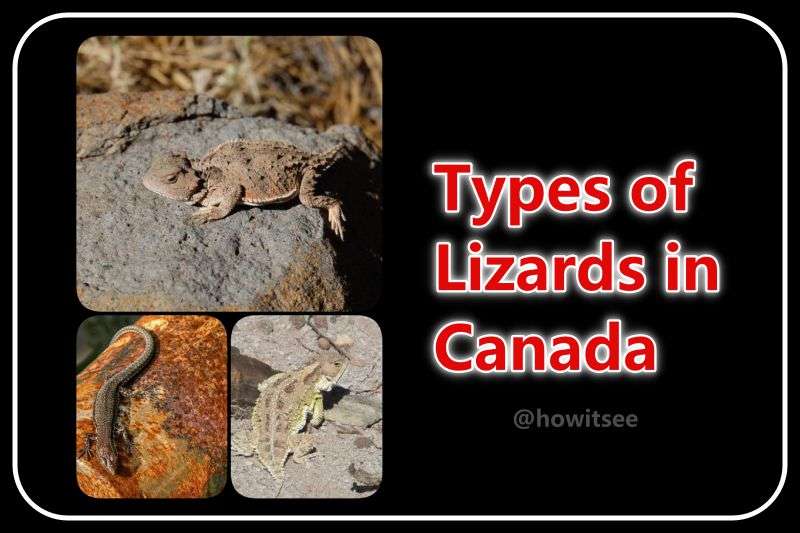Today we have come up with an interesting article that describes all types of Lizards in Canada. Lizards cause various emotions in humans; some people are very frightened just by looking at them, and some are amazed by their activities.
Lizards are small reptiles that belong to the order Squamata. They are characterized by a moderately cylindrical body, four well-developed legs, a flexible head, epidermal scales, and a long tail.
Lizards are not so commonly found in Canada, and their diversity is shallow as they are well adapted to live in warmer climates and arid areas such as deserts, which restricts them to only living in the warmer southern side of the country.
Only six species of lizards are native to Canada, of which one is extirpated. Accounting for the lower number of lizard species found in Canada, a new species of common wall lizard has been successfully introduced within the country to enhance their numbers.
We can also find beautiful ground-dwelling or tree-dwelling skinks in Canada.
7 Types of Lizards in Canada
1) Northern Alligator Lizard

- Scientific Name: Elgaria coerulea
- Size: 27.5 cm (10.8 in).
- Location: southern British Columbia, eastern Vancouver Island, and several Gulf Islands.
Northern alligator lizards are medium-sized, slim lizards with keeled scales, long tails, and small legs. They range in color from silvery-gray to brown; some olive-green specimens are also found.
Distinctive skin folds on the flanks are present that separate the ventral smooth scales from the rough dorsal scales. They have dark brown speckles and a somewhat banded pattern.
These lizards are carnivores and feed on slugs, beetles, crickets, spiders, and moths and dwell in warm rocks, tree bark, or rotten logs. They have a long tail that adds six inches to their overall length!
2) Western Skink
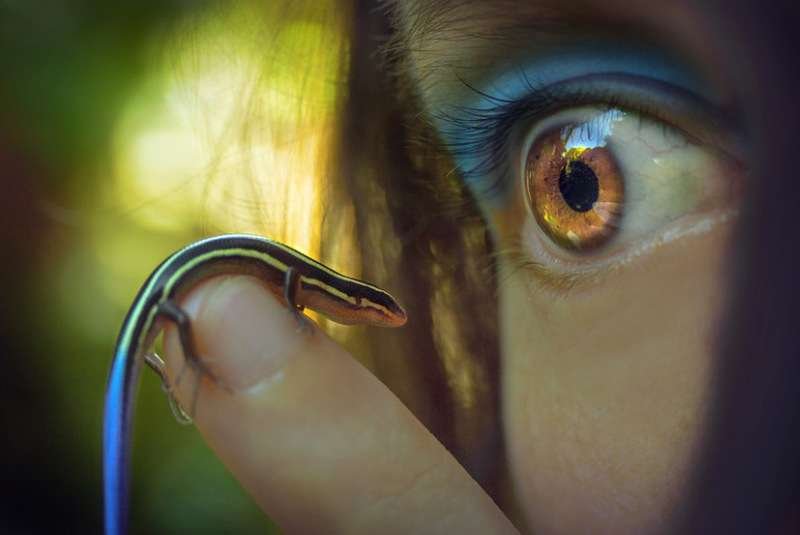
- Scientific Name: Plestiodon skiltonianus
- Size: 10-20 cm
- Location: parts of British Columbia, between Kootenay Lake and Princeton.
Western skinks are beautifully colored lizards with striped patterns and have a distinctive bright blue tail in juveniles and grey in adults.
They have very shiny, smooth scales and are distinguished from other species by dorsolateral brown or black bands that are bordered with cream or whitish stripes on the sides. These bands originate from the sides of the head and extend behind the hind limbs.
They enjoy sunbathing and spend their summers basking in open fields. They hibernate in communal dens during the winter. They are very good burrowers and are known to bite and flee if any predator grasps them.
3) Five-lined Skink
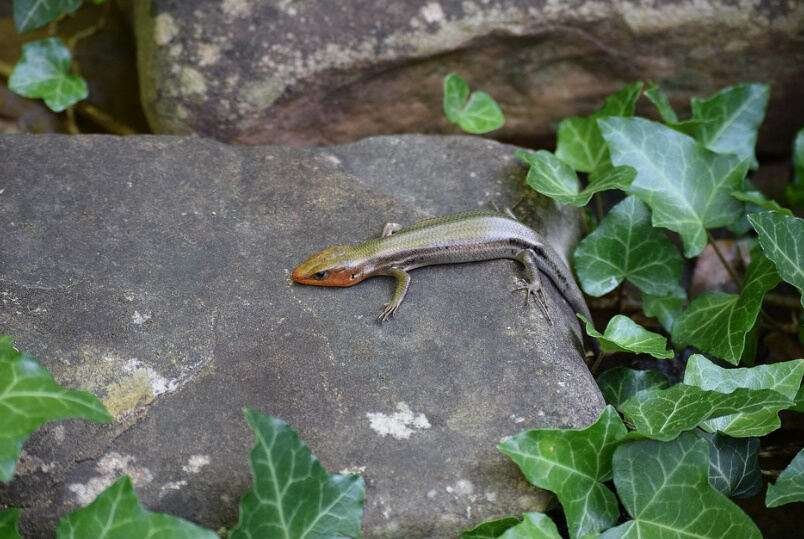
- Scientific Name: Plestiodon fasciatus
- Size: 12.5-21.5 cm (4.9-8.5 in).
- Location: parts of Ontario
Though the five-lined skink looks like salamanders, they are actually just pretty lizards. These skinks are black-brown with five cream-or yellow-colored distinctive stripes running down from their snout to the tail and a cobalt blue tail, which fades as they age.
Five-lined skinks are ground-dwelling but also reside on trees; when threatened, they run quickly to the nearest tree or hide under logs. Just like other lizards, they show autotomy, which means they cast off their tails to distract their predators and escape.
They primarily feed on a variety of arthropods, particularly beetles, spiders, crickets, and other insects. They are solitary, diurnal lizards that are endangered in Ontario.
4) Prairie Skink
- Scientific Name: Plestiodon septentrionalis
- Size: 13–22 cm (5–9 inches).
- Location: Brandon Sandhills and Lauder Sandhills in Manitoba
The prairie skink is a medium-sized lizard that is native to prairies. Adult prairie skinks are lustrous brown or bronze on the back and darker on the flanks and have various thin, light-colored stripes on the sides and the dorsal. Juveniles have purplish blue tails, and adults have paler brown tails.
Two subspecies of prairie snakes are found throughout Canada: the Northern Prairie Skink and the Southern Prairie Skink.
They are known to hibernate for seven months a year, and males become brightly colored during mating season to attract potential partners.
5) Pygmy short-horned lizard
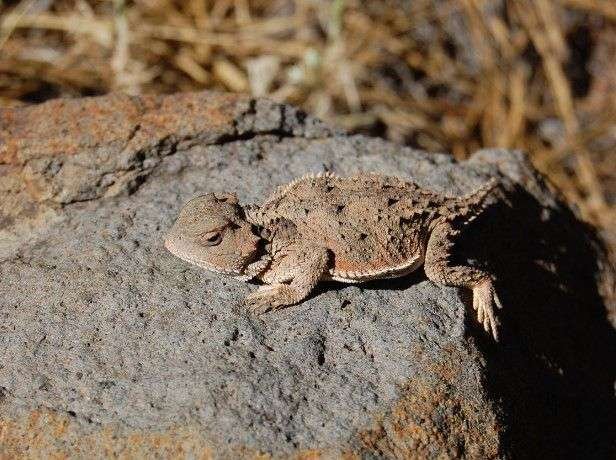
- Scientific Name: Phrynosoma Douglasii
- Size: 1.25–2.5 in (3.2–6.4 cm)
- Location: southeast Alberta and southwest Saskatchewan
Pygmy short-horned lizards are the smallest horned lizards and are often called horned toads because of their toad-like appearance.
These are mud-colored, flat-bodied, small, round lizards with trailing scales on the edges. They have conspicuous, small, pointed scales on the head and back that form a crown of short, stubby horns.
They feed on ants, beetles, and small pebbles, and when threatened by predators, they are known to squirt blood from the corner of their eyes, which can travel distances up to 3 feet, so better watch out!
6) Greater Short-horned Lizard
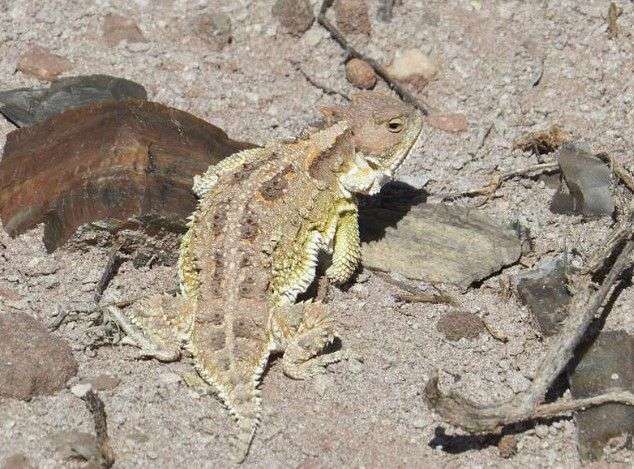
- Scientific Name: Phrynosoma hernandesi
- Size: 2-5 inches (5.1 to 12.7 cm)
- Location: Alberta and Saskatchewan
Greater Short-horned Lizard is a small, flattened lizard with a border of projected scales along its flanks and an array of pointed horns on its back and neck.
The blotched upper coloration and their thorny appearance help them blend into scanty vegetation, and the ability to remain stationary provides the lizards with superb camouflage, which helps them protect themselves from predators and trap their prey.
Their horns make them less palatable to their predators, and just like other short-horned lizards, they also have the ability to shoot a stream of blood from their eyelids.
They like to live on slopes that have crumbly soil and patchier vegetation and dwell in shaded areas.
7) Common Wall Lizard
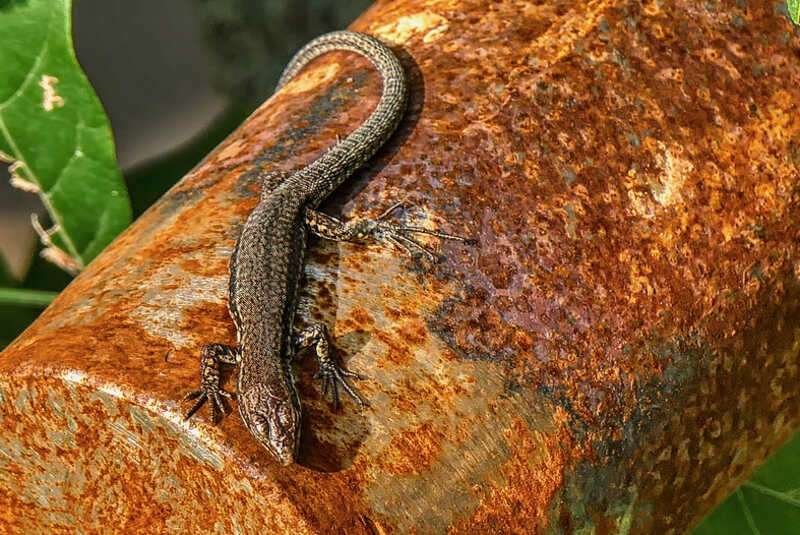
- Scientific Name: Podarcis muralis
- Size: 8 inches
- Location: Vancouver Island and Denman Islands
Since the introduction of the common wall lizard near Brentwood Bay in Saanich, they have well-established themselves in certain portions of Canada. Common wall lizards got their name from their habit of dwelling on walls, boulders, and rocks.
They are small, thin lizards with small scales and variable coloration and patterns. These lizards are very agile and have the ability to run on vertical surfaces.
Six morphs of these species are present throughout the world and vary in length, color, and survival rates. They are adapted to dig as well as climb, so they can feed on a variety of invertebrates, insects, and spiders.
Conclusion:
The number of lizards found in Canada could be low, but their diversity is high. They exhibit a lot of patterns, show different characteristics, and have a range of activities, which makes them different from each other. Here, we conclude our article.
Also Read:

Hey there! I’ve been the kid who used to love watching all the science stuff and that fascination lead me to choose Zoology as my Major in Graduation. I’m a self-taught writer and spend my time writing scintillating content on animals. I love observing animals behavior and their bond with humans. I want to give my point of view regarding animals i research about. I had done several projects on animals during my graduation and learned their behavior thoroughly.
